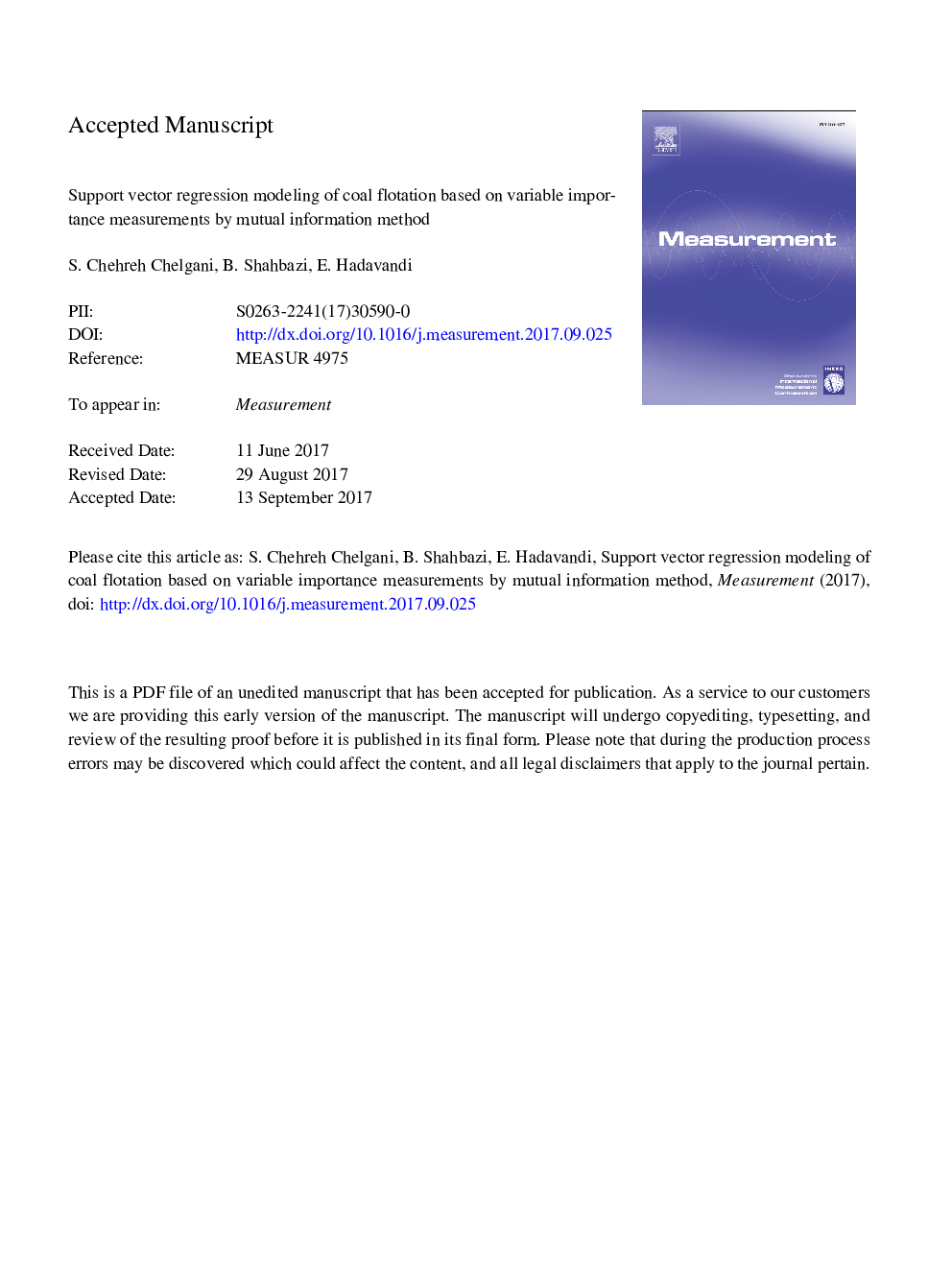| Article ID | Journal | Published Year | Pages | File Type |
|---|---|---|---|---|
| 7122193 | Measurement | 2018 | 18 Pages |
Abstract
Support vector regression (SVR) modeling was used to predict the coal flotation responses (recovery (Râ) and flotation rate constant (k)) as a function of measured particle properties and hydrodynamic flotation variables. Coal flotation is a complicated multifaceted separation process and many measurable and unmeasurable variables can be considered for its modeling. Therefore, feature selection can be used to save time and cost of measuring irrelevant parameters. Mutual information (MI) as a powerful variable selection tool was used through laboratory measured variables to assess interactions and choose the most effective ones for predictions of Râ and k. Feature selection by MI through variables indicated that the best arrangements for the Râ and k predictions are the sets of particle Reynolds number-energy dissipation and particle size-bubble Reynolds number, respectively. Correlation of determination (R2) and difference between laboratory measured and SVR predicted values based on MI selected variables indicated that the SVR can model Râ and k quite accurately with R2Â =Â 0.93 and R2Â =Â 0.72, respectively. These results demonstrated that the MI-SVR combination can quite satisfactorily measure the importance of variables, increase interpretability, reduce the risk of overfitting, decrease complexity and generate predictive models for high dimension of variables based on selected features for complicated processing systems.
Related Topics
Physical Sciences and Engineering
Engineering
Control and Systems Engineering
Authors
S. Chehreh Chelgani, B. Shahbazi, E. Hadavandi,
